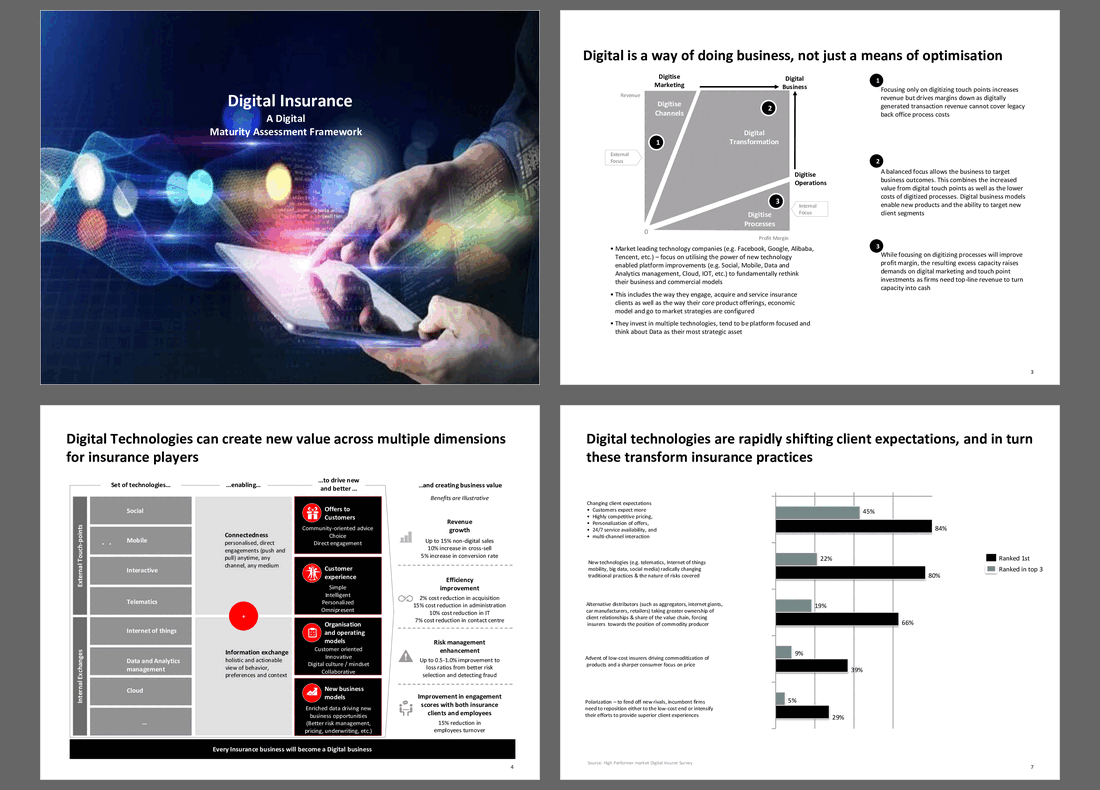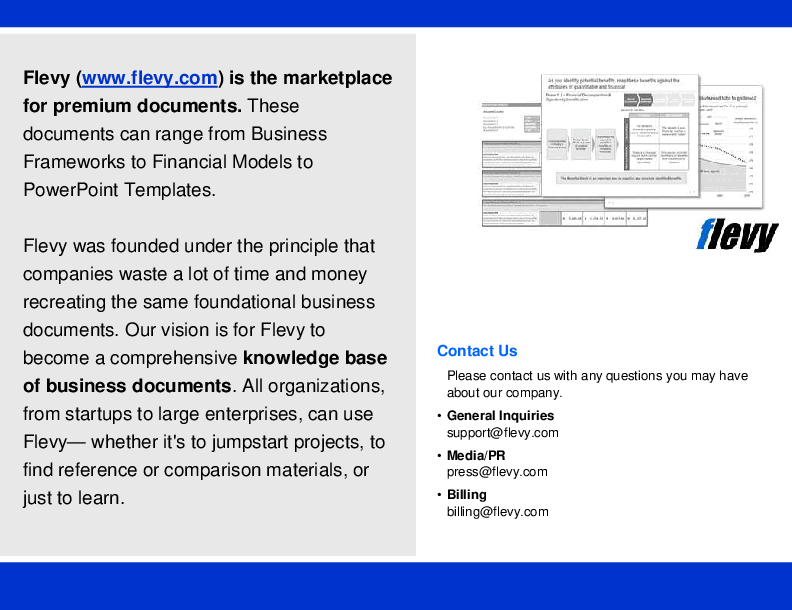Digital Insurance Maturity Model (PowerPoint PPTX Slide Deck)
PowerPoint (PPTX) 25 Slides
BENEFITS OF THIS POWERPOINT DOCUMENT
- Digital architecture for an Insurer
- Digital maturity model for an insuer
- Digital Insurance
DIGITAL TRANSFORMATION PPT DESCRIPTION
This deck provides an outline for
1. The strategic necessity facing Insurers in embracing digital
2. The major technology and architectural components needed to be in place to be truly digital
3. Exploration of stages of excellence for insurers against each of these seven components, what lagging and leading plays are doing in each of these domains in order to build the capabilities needed for a digital insurance business
The deck provides a frame for these considerations in a clear and concise manner that can easily be used with clients to determine where they are today and where they need to get to in order to bring their digital strategy to life.
As each of the seven layers on the architecture are explored, the components that make these layers up are explained and a spectrum of best practice is provided for each in turn.
The PPT delves into how digital technologies can drive new value for insurance players by enhancing connectedness, information exchange, and operational models. It outlines the benefits of leveraging technologies like social, mobile, telematics, and IoT to improve offers to customers, customer experience, and organizational efficiency. The deck also highlights the potential for revenue growth, efficiency improvements, and risk management enhancements.
Digital technologies are reshaping client expectations and insurance practices. The document discusses the impact of changing client expectations, new technologies, and alternative distributors on the insurance landscape. It emphasizes the need for insurers to adopt a fluid and agile approach to architecture development to meet diverse business needs. The deck provides a comprehensive framework for assessing digital maturity across various components, including ecosystem, data and analytics, and security.
Got a question about the product? Email us at support@flevy.com or ask the author directly by using the "Ask the Author a Question" form. If you cannot view the preview above this document description, go here to view the large preview instead.
Source: Best Practices in Digital Transformation, Insurance, Digital Maturity PowerPoint Slides: Digital Insurance Maturity Model PowerPoint (PPTX) Presentation Slide Deck, Affinity Consulting Partners
DIGITAL TRANSFORMATION PPT SLIDES
This document is available as part of the following discounted bundle(s):
Save %!
The Affinity Consulting Bundle - business transformation
This bundle contains 11 total documents. See all the documents to the right.









